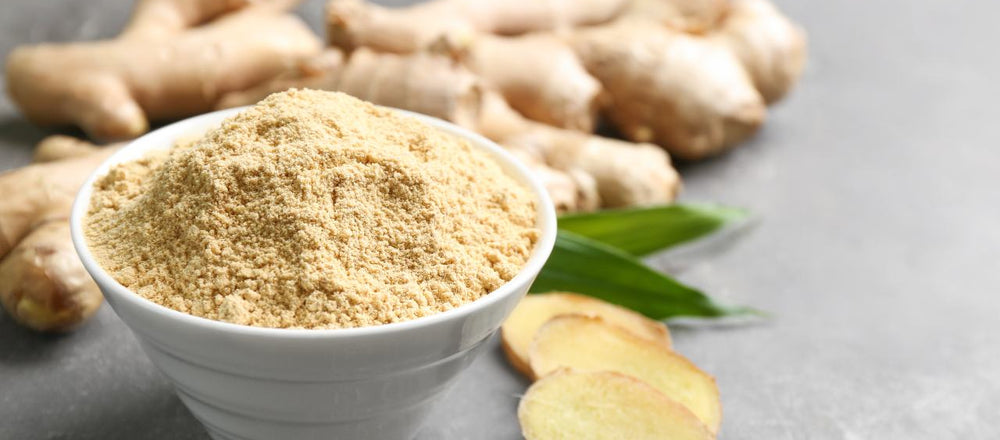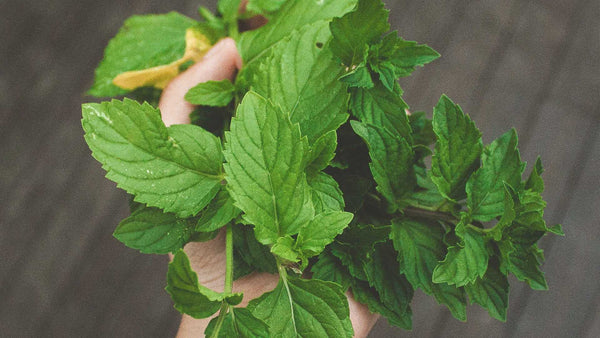In our Ingredient Spotlight series, we take a deep dive into our powerful plant-based ingredients.
Possibly the longest cultivated ingredient in human history, ginger is a flavorful and powerfully medicinal rhizome that helps soothe digestion, fight inflammation, boost immunity, and more.
The History of Ginger - Both Food and Medicine
We’re all familiar with the knobbly brown roots we see at the grocery store—but what about the journey that brought this beloved ingredient to our kitchen tables?
The part of ginger that we eat is called the rhizome, which is an underground part of the plant that’s often mistaken for a root. Aboveground, ginger plants have tall, leafy, green stalks that grow white flowers and are perfectly suited to the Southeast Asian tropical rainforests where ginger first originated. A part of the Zingiberaceae family, ginger is related to turmeric, cardamom, and nutmeg.
Historical records of ginger cultivation and its use as both an herbal and culinary ingredient go back over 7,000 years. Ginger has been in use for longer than written history can tell us, showing up in the first books ever written about Traditional Chinese Medicine and Ayurveda. These ancient practices describe ginger as a “warming” or energetically “hot” ingredient that had a wide variety of medicinal uses.
The Medicinal Uses and Health Benefits of Ginger

The most common use for ginger throughout history and across cultures is as a stomach soother. Ginger tea, candies, and aromatherapy are known to help with nausea, bloating, vomiting, cramps, and indigestion. Scientists have studied the gastrointestinal benefits of ginger extensively, finding the spicy rhizome to be an effective home remedy for a range of digestive issues.
The dominant component in ginger rhizomes is gingerol. This oily, antioxidant-rich substance is what gives ginger it’s distinct flavor and pungent scent—and it also has numerous health effects on the human body. Gingerol is known to improve gut health and move digestion along, but it’s also celebrated for its anti-inflammatory properties and its potential to fight cancer.
Gingerol’s anti-inflammatory qualities mean that this plant is an excellent ingredient for supporting muscle recovery, brain function, cardiovascular health, and combating arthritis. In addition to all of these wonderful uses, ginger’s benefits to the body don’t stop there. Since it’s “warming,” ginger is the perfect ingredient for fighting off a cold and boosting your immune system.
How Using Ginger Can Support Holistic Health and Wellness
The best thing about ginger is that it is not only a powerful ingredient for your health, but it’s also delicious and versatile to cook with. Depending on the effects you’d like to see, there are a number of different ways to experience the health benefits and tasty flavors that ginger has to offer.
For soothing an upset stomach, choose a steaming mug of ginger tea. This makes for a perfect after-dinner drink that helps ease digestion and soothe the body before bedtime. If you suffer from car sickness, sea sickness, or other nausea, ginger tea or a whiff of ginger essential oil will help soothe your system and restore a sense of balance.
In fact the scent of ginger can be a wonderful way to enjoy the effects of this zingy rhizome. Ginger aromatherapy doesn’t just help with digestion, it’s also said to help the body build warmth, inner fire, and confidence.
But our favorite thing about ginger is still the taste. Thankfully, loads of fresh or dried ginger can be added to pretty much any hot meal to spice things up and keep the body warm. Try adding ginger to soups, curries, stir fry, and definitely this delicious looking ginger-lemon congee! The gingerol in your dinner will help boost immunity and keep colds at bay. Some other ingredients that can help boost immunity and that go well with ginger include turmeric, onion, garlic, and herbs like thyme, oregano, and rosemary.
We also love to include ginger in our diets to support natural muscle recovery and fight inflammation. One of the easiest ways to do this is by stirring a HOLISTIK recover STIK into your water, or by taking a quick shot of anti-inflammatory ginger-citrus juice! When we have a bit more time on our hands, we love to indulge in a creamy and spicy golden milk latte made with ginger, turmeric, black pepper, cinnamon, and honey. It feels so luxurious to sit back and enjoy sipping on this instead of an afternoon coffee.
Cooking with the zesty, warm, and earthy flavors of ginger is a delightful experiment that is good for both your taste buds and your body. Whether you’re just looking for an overall wellness boost or seeking a solution to a specific ailment, there are countless ways to incorporate ginger into your diet and daily habits!




